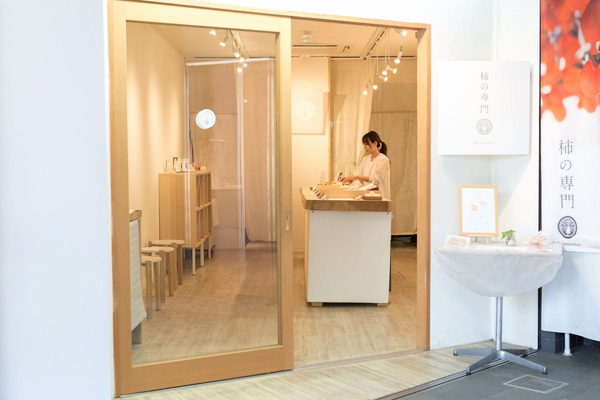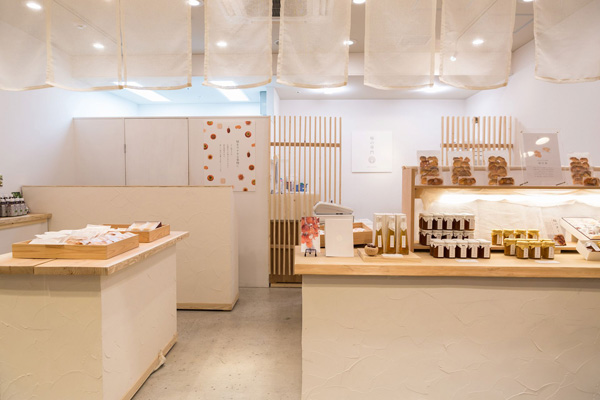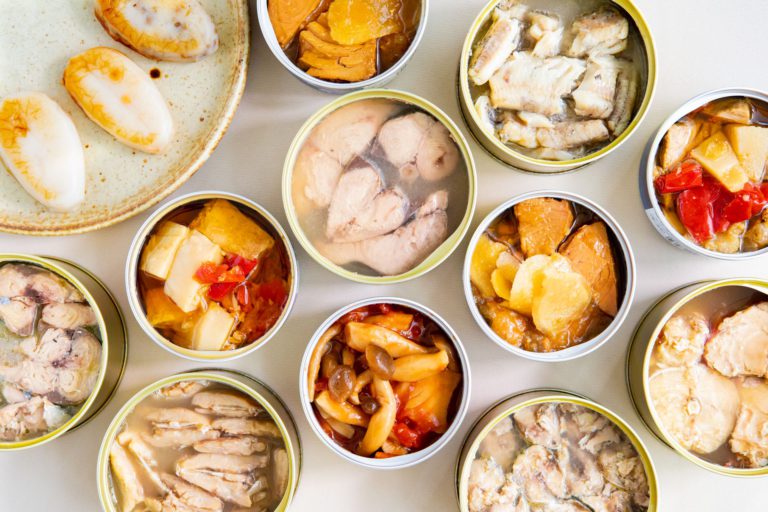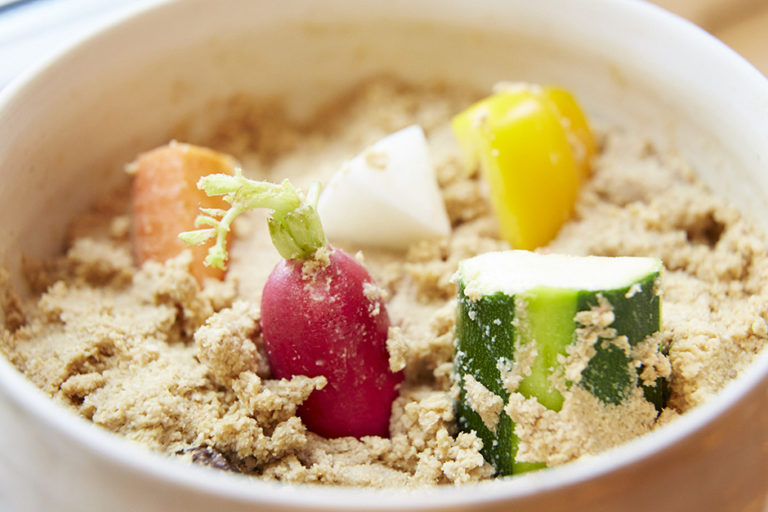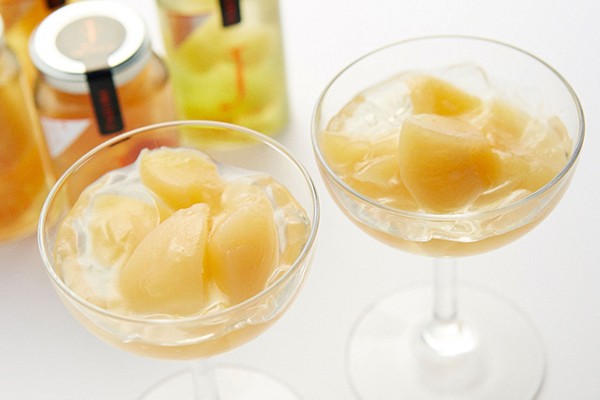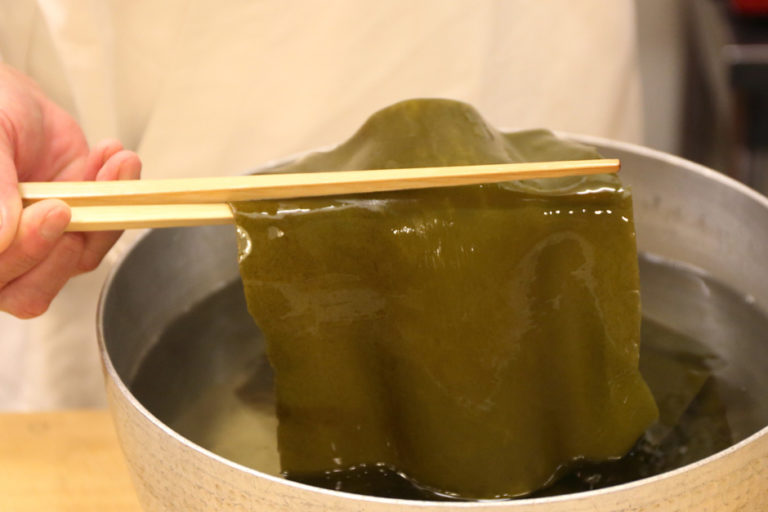Persimmon Sweets Offer a Subtle Bitterness and Feelings of Nostal-gia
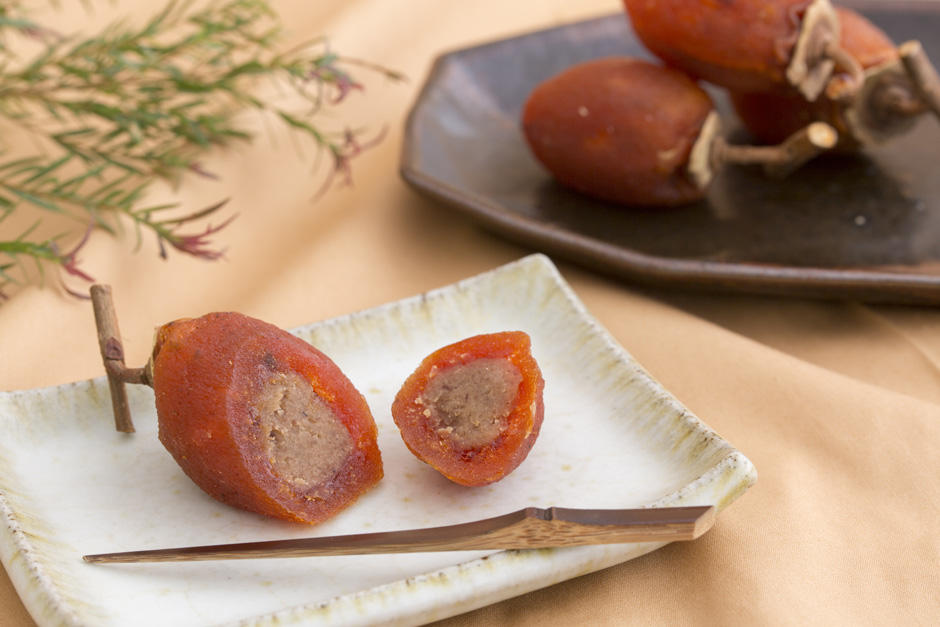
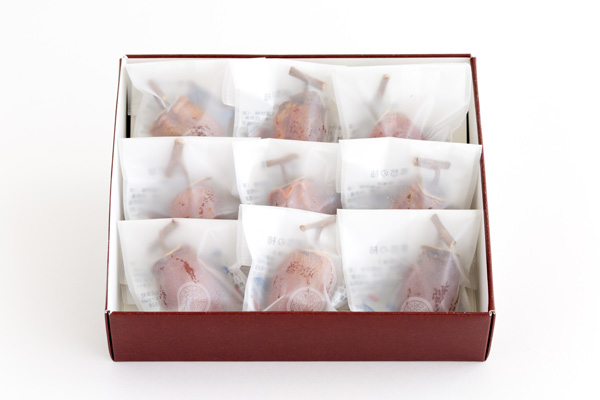
In this article, we introduce the popular Kyoshu no Kaki manufactured by Persimmon Specialty Shop Ishii of Nishiyoshino Town.
Here are some reasons why Kyoshu no Kaki is perfect for a gift:
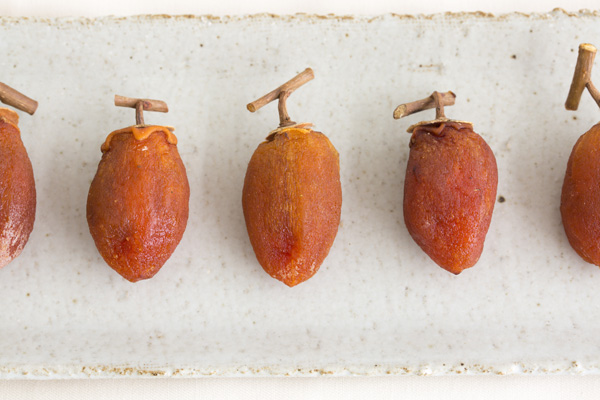
An endearing appearance and name
The main ingredient of the Kyoshu no Kaki confectionary is horenbogaki persimmon. This persimmon has been native to the Nishiyoshino Town area from long ago. These horenbogaki are dried and stuffed with sweet paste. Their dainty and adorable shape make them perfect as a refreshment served with tea. The name Kyoshu no Kaki (literally, “nostalgic persimmons”) is also endearing, and makes one want to talk about the origins of this fruit.
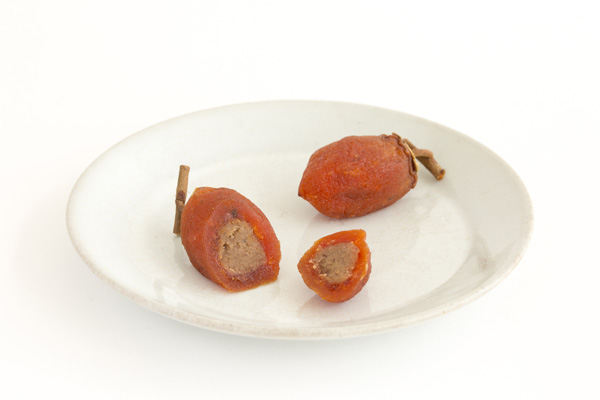
Persimmons and chestnuts—a duet of sweetness and subtle bitterness
To showcase the powerful bitterness horenbogaki persimmons originally have, chestnuts are mashed with their astringent skin intact to blend their subtle bitterness in the chestnut paste. Although dried persimmons often have a slight bitterness when eaten on their own, combining it with sweet paste creates a depth to the flavor, using the subtle bitterness as an accent.
Indigenous persimmons enliven the community
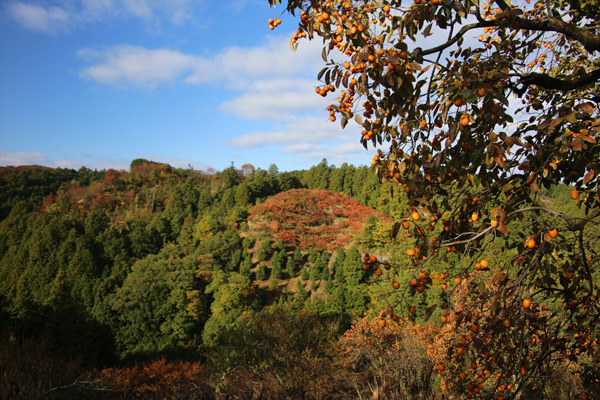
Persimmon Specialty Shop Ishii was established in 1965, in the Nishiyoshino Town area of Gojo City in Na-ra Prefecture.
“My grandfather created this company because he wanted to revitalize the community with a specialty prod-uct. In the beginning, the company manufactured pickled Japanese ginger, but they next started to establish a brand for persimmons,” explains the third-generation president of Persimmon Specialty Shop Ishii, Kazuhiro Ishii.
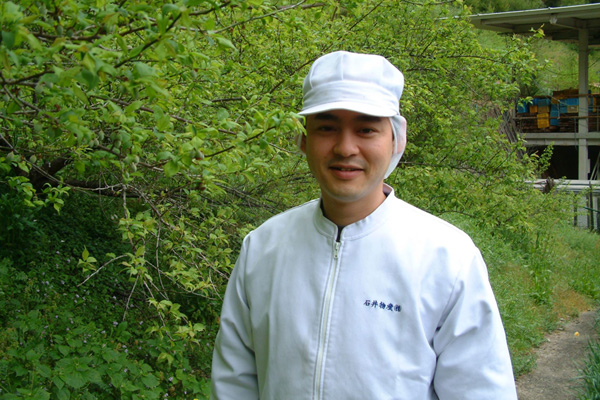
One issue the company had when establishing the “Nishiyoshino Persimmons” brand was the “imperfect” per-simmons. Fruit grown in open-air areas are prone to scuffing and damage, and allowing these imperfect per-simmons to go on the market would harm the brand value. For this reason, the community used to dispose of large quantities of persimmons. As a start, “persimmon vinegar” was created to prevent these persimmons from going to waste, and development on various processed persimmon products followed.
“Processing persimmons created new value, and created a positive cycle that enables us to promote Nishiyoshino persimmons all year round and also to contribute back to farmers while reducing the number of disposed persimmons. My grandfather’s dream of revitalizing the community through specialty products has started to come true,” says Ishii.
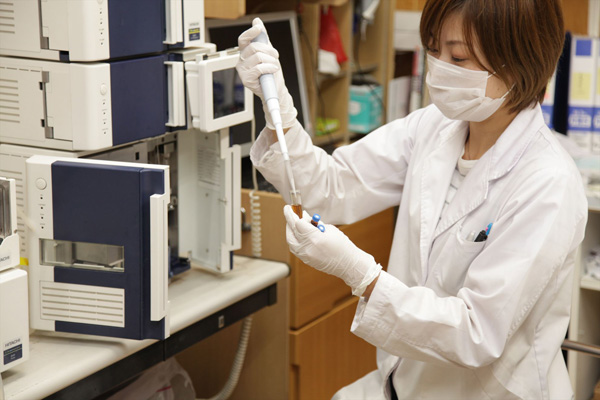
The company now holds pride in their “Persimmon Specialty” brand and has made many endeavors resulting in various new products under their motto of “promoting persimmons as wonderful fruit” and “incorporating science into persimmons.” Their diverse development spans from basic research on persimmons to collabora-tions with research organizations such as universities.
As they are a “Persimmon Specialty” company, the only major ingredient they use is persimmons. Persim-mons are not very fragrant and discolor easily, and processing these fruits are difficult because they soften and rot easily after ripening. However, these disadvantages also mean that there are few rival products. Once product development is successful, the product stands unrivaled in the market, which is a strength of this company.
Overcoming the strong bitterness of horenbogaki
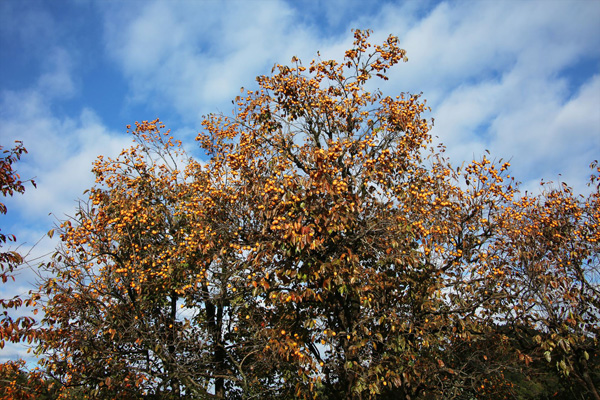
Kyoshu no Kaki is also a product born through much effort. The main ingredient horenbogaki is a type of per-simmon native to the Nishiyoshino area. This persimmon features a strong bitterness that does not turn to a powerful sweetness when dried. In the past, it was used mainly for decorative purposes, such as decorations for ceremonial round rice cakes.
Persimmon Specialty Shop Ishii used to sell horenbogaki as hung and dried persimmons, but it resulted in poor sales and many returned persimmons by customers because they were too bitter. As horenbogaki is one of the major persimmon types in the region, the shop went through many trial-and-errors to incorporate it in one way or another. Their efforts paid off when they completed a product featuring the original horenbogaki bitterness by blending in sweet chestnut paste including chestnut astringent skin.
This product received the Best Selection of World-class Souvenirs award from the Japan Tourism Agency in 2014, and as a result, became a vastly popular product.
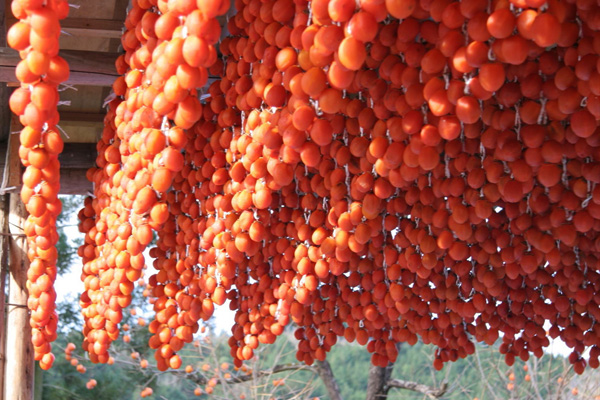
“Now, we have requested that farmers plant more horenbogaki trees because there are not enough to manu-facture this product. We recommend eating this snack in a very traditional, Japanese way with Japanese tea. A slightly bitter tea goes well with this confectionary. Persimmons also go very nicely with wine, and we also recommend wine lovers to try this combination as well,” says Ishii.
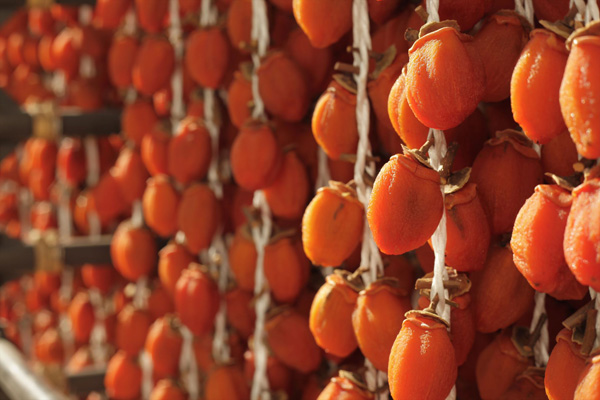
These bitter persimmons are harvested from tall trees, peeled and hung to dry for one month, with utmost caution given regarding the weather. An incision is made to remove the small seeds and stuffed with chestnut paste where the seeds were, before adjusting the persimmons’ shape. The shop hopes to invoke a sense of nostalgia with the taste of traditional Japan, when taking time and effort during daily chores was still the norm. This is the sentiment put into the unique name of Kyoshu no Kaki.
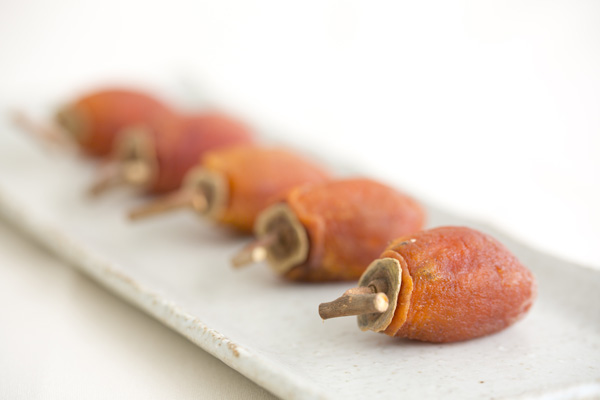
This little sweet enables us to reminisce on how people used to live mindfully, putting time and effort into their lives, and also about making the most of regional produce, which are aspects of life the Japanese have cher-ished from the past.

